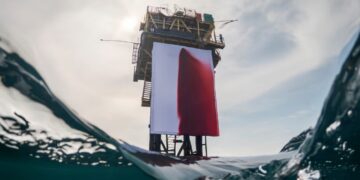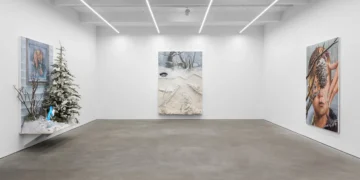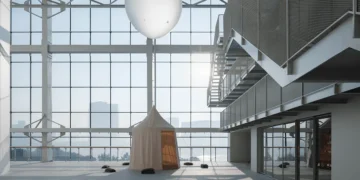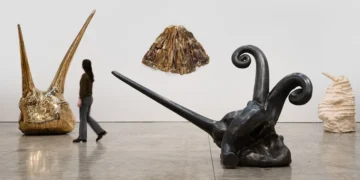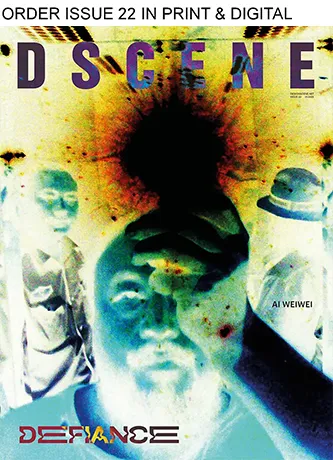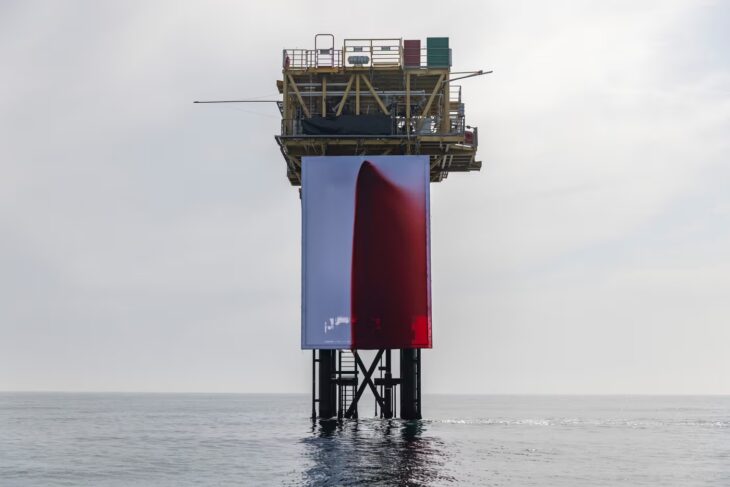
Greenpeace climbers and Anish Kapoor turned Shell’s Skiff platform into a stage for protest. Seven activists secured a 12-by-8 meter canvas to the rig, 45 nautical miles off Norfolk, then hosed 1,000 liters of red liquid, seawater mixed with beetroot powder and food dye, onto the fabric until it bled down the steel. They titled the work “BUTCHERED.”
ART
The team reached the site aboard the Arctic Sunrise before scaling the structure and rigging a high-pressure hose 16 meters above the sea. The torrent stained the canvas into a vast crimson field that reads as wound, spill, and accusation in one image. Greenpeace framed the action as a response to the fossil fuel industry’s human and environmental toll during a summer of extreme heat.

Kapoor described the piece as a “visual scream,” aimed squarely at the extractive economy. He tied the imagery to lives and ecosystems already paying for a crisis driven by oil and gas profits, and he called for artists and citizens to push back. The choice of site sharpened the message: take the art to the source.

Several outlets reported that “BUTCHERED” marks the first fine artwork installed on an active offshore gas platform, underscoring the rarity of intervening directly in the machinery of extraction. Shell condemned the operation as illegal and unsafe; Greenpeace defended it as necessary civil resistance.

The intervention also extends Kapoor’s track record of confronting fossil sponsorships. In 2019 he joined dozens of British artists urging the National Portrait Gallery to end ties with BP, a move that signaled mounting pressure on cultural institutions to cut oil money. “BUTCHERED” brings that pressure offshore, where decisions about new fields and approvals shape the near future.

The action lands in a fraught context. After years of clashes at sea and in court, Shell and Greenpeace reached a limited legal settlement in late 2024, even as disputes over North Sea projects continue. “BUTCHERED” shows that the campaign now targets legitimacy as much as infrastructure, using a gas rig as a gallery to force a public reckoning with what extraction costs.
